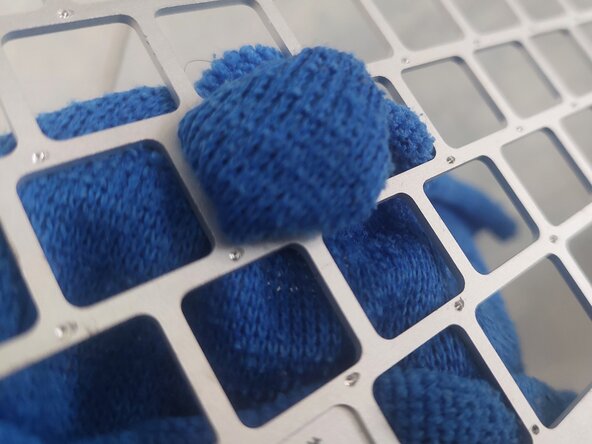crwdns2935425:05crwdne2935425:0






-
Once we have successfully ripped out the keyboard we will have to remove all the remains from the rivets from the casing. This is not as daunting as it seems, and can take just a few minutes to complete.
-
Place the empty top case on a cloth to prevent any scratches & position it against a wall. This way the case CANNOT move while we PUNCH OUT the rivets. Avoid if possible placing it against kitchen tiles as they could easily get cracked when we are punching against them!
-
Using a flat edged tool such as a scraper, we lay the tool as flat as we can as not to cut into the casing itself and put it to the rivets and just punch them out. It is possible to get 2 or 3 out with each hit and sometimes more.
-
Some may suggest to grind of the old rivet heads with a grinder, but this takes way to long to do and may hinder removing the remaining parts of the rivets as they may become to shallow. The aim is to get the rivets to pop out leaving behind a hole in which to screw into.
-
You will notice that when the rivets fly out they will leave a perfectly sized hole for all the tiny screws that we must use to firmly secure the keyboard to the case.
-
Double check that ALL of the rivets have been successfully removed. A good idea is to run your finger where all the rivets once were to check everything is nice and smooth and that the holes are clean and ready to house a screw, otherwise the new keyboard will not sit tightly in the casing.
-
* If in the worst case scenario some of the rivets have remained and have not fully popped out of their hole or have been sheered off, we may need to use a tiny thin drill bit to drill a hole, but take care to go no deeper than 1mm, otherwise we may risk drilling right through to the other side of the case.
-
* It is also a good time to get a cloth and give a good clean out of the key holes on the casing as they are prone to collect dirt or debris from sticky fingers in the past.
crwdns2944171:0crwdnd2944171:0crwdnd2944171:0crwdnd2944171:0crwdne2944171:0